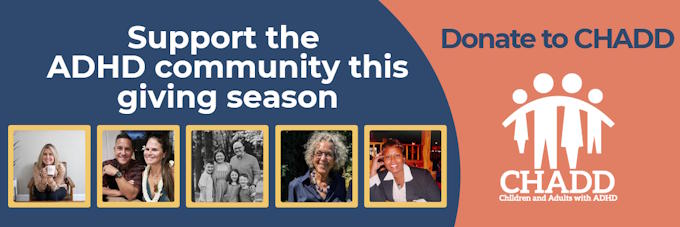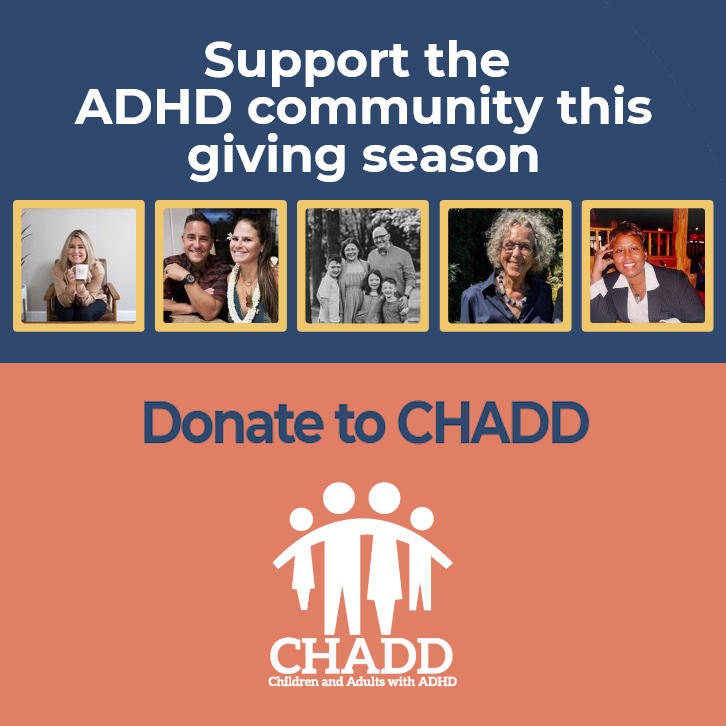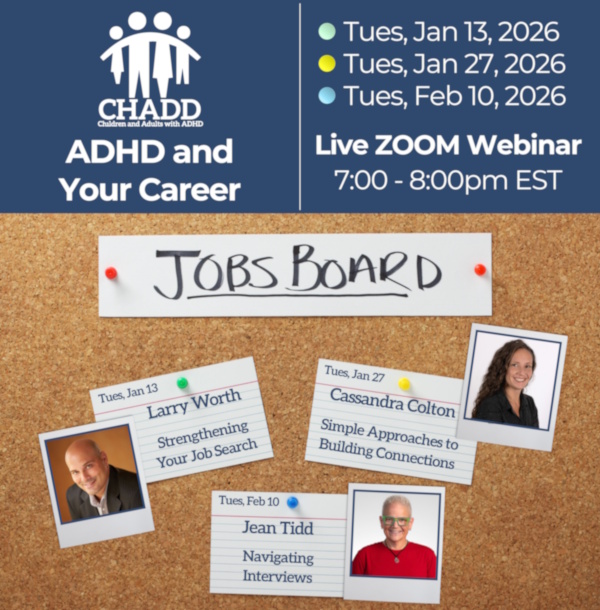Online Communities
ADHD in the News 2026-01-08
January 8, 2026ADHD drugs work, but not the way experts thought
Acid Suppressants in Pregnancy Not Linked to Neuropsychiatric Disorders in Kids
Adverse Prenatal Exposures Linked to Higher Rates of Mental Health Issues, Brain Changes in Adolescents
ViewADHD Weekly, November 6, 2025
November 6, 2025Changing the Way You Communicate with Your Young Adult
Toppling the Myths of ADHD
The Impact of Screen Time on Neurodivergent Kids
ViewEvents
-
ADHD and Your Career: Strengthening Your Job Search
January 13, 2026—January 13, 2026 | 7 PM ET
Register -
ADHD and Your Career: Simple Approaches to Building Connections
January 27, 2026—January 27, 2026 | 7 PM ET
Register -
Understanding Family Perspectives to Better Support Black Children With ADHD Ask The Expert
February 4, 2026 | 2:00 PM
Register -
ADHD and Your Career: Navigating Interviews
February 10, 2026—February 10, 2026 | 7 PM ET
Register -
Training on ADHD | Self-Paced Online Courses
November 1, 2024—November 1, 2034
Register -
Listen to podcasts about ADHD
December 1, 2025—November 1, 2034
Register -
Understanding Neurodevelopmental Disorders After Epilepsy Surgery
June 30, 2025—June 30, 2025 | 2 PM PT/5 PM ET
Register -
A Productive Mindset that Keeps Showing Up Ask The Expert
May 22, 2025 | 2:00 EST
-
The Effects of Federal Healthcare and Education PoliciesCHADD Webinar
April 8, 2025 | 12 PM ET
-
The Role of Speech Therapy in ADHD Management Ask The Expert
March 24, 2025 | 2:00 EST
-
Identifying Misinformation About ADHD Ask The Expert
March 18, 2025 | 2:00 EDT
-
Support Your Child with ADHD Through TransitionsAsk The Expert
March 18, 2025 | 6:30 PM ET
-
ADHD in Military Families: Challenges, Support, and Strategies Ask The Expert
March 13, 2025 | 7:00 PM ET
-
Emotions and Motivation with ADHD Ask The Expert
February 20, 2025 | 1:00 EST
-
Help Kids with ADHD Build Social Skills and Resilience in a Digital World Ask The Expert
February 5, 2025 | 8:00 EST
-
The Importance of Adult ADHD Guidelines: Is There Really an Increase In ADHD or Are Adults Finally Being Diagnosed?CHADD Webinar
September 24, 2024 | 12 PM ET
-
What Is ADHD? How It Affects Children and AdultsCHADD Webinar
July 23, 2024 | 12 PM ET
-
Using Context to Build and Enhance Executive FunctioningAsk The Expert
June 25, 2024 | 3:00 PM EDT

Attention Magazine
Recognized for its excellence, CHADD’s bimonthly magazine is rich in practical information, clinical insights, and evidence-based strategies for managing ADHD.
LEARN MORE






